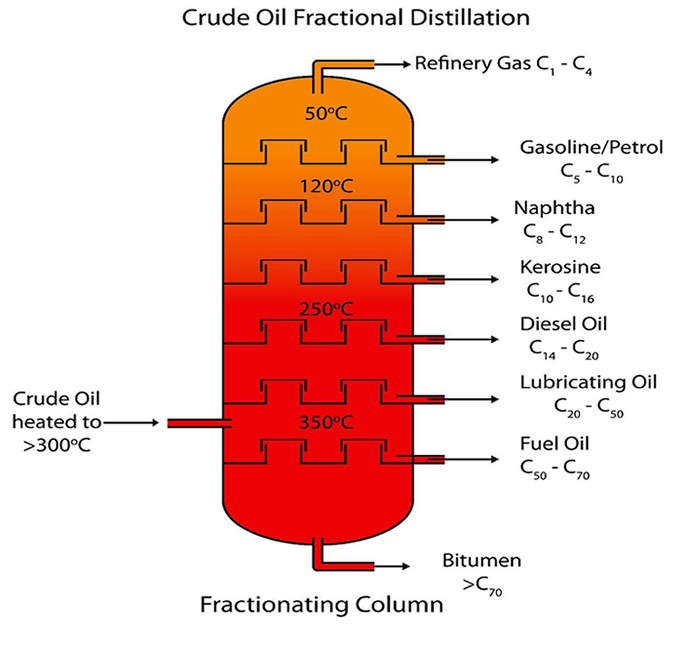The main types of lubricating oil additives are as follows:
- Detergent dispersant: Adsorb oxidation products and disperse them in oil. It is composed of planktonic components which are antioxidant, corrosion resistant, combined and synthesized.
- Anti-oxidant and anti-corrosive agents: to improve the safety of oil oxidation – prevent metal oxidation, catalyze obsolescence and delay the oxidation rate of oil products, isolate acidic substances from metal contact to form protective film with anti-wear property.
- Anti-wear agent: In the high temperature part of the friction surface, it can react with metal to form low melting point.
- Oily agents: They are all active substances with polar molecules. They can form a solid adsorption film on the metal surface. Under the condition of boundary lubrication, they can prevent the direct contact of the metal friction surface.
- Viscosifier: Also known as thickener, mainly Polyamide-type extreme polymer compounds, viscosifier can not only increase the viscosity of oil, but also improve the viscous-temperature properties of oil.
- Antirust agent: It is a kind of polar compound with strong adsorbing power to metals. It can form a close adsorbing film on the interface between metals and oils to isolate the erosion of water, moisture and acidic substances. Antirust agent can also prevent oxidation and the formation of acidic oxides, thus playing a role of antirust.
- Antifoaming agent: It can make the bubbles quickly spill over the oil surface, lose stability and easily rupture, thus shortening the existence time of bubbles.
The concept of lubricating oil additive is to add one or more compounds to lubricants in order to obtain some new properties of lubricants or to improve some of the existing properties of lubricants. Additives are mainly functional antioxidants, antiwear agents, friction modifiers (also known as oiliness agents), extreme pressure additives, detergents, dispersants, foam inhibitors, anticorrosive antirust agents, flow improver, viscosity index enhancers, and so on. The additives sold in the market are generally the composite of the above single additives. The difference is that the composition of the single additive is different and the proportion of several single additives in the composite additive is different.
Clean and dispersible additives are of great significance: first, lubricating oil can oxidize the colloidal substances, coke and other insoluble substances or suspended in oil, forming a stable colloidal state and not easy to deposit on components; second, it means that the colloidal substances and coke deposited on engine components can be washed down by washing with lubricating oil. Detergent dispersant is a surface active substance, which can absorb solid particle contaminants in oil and suspend them on the surface of oil to ensure that the oil participating in the lubrication cycle is clean, so as to reduce the formation of high temperature and paint film. The dispersant can disperse the low-temperature sludge in the oil, so that it can be filtered out in the lubricating oil cycle. Detergent and dispersive additives are their general name. They also have the functions of washing, anti-oxidation and anti-corrosion. Therefore, it is also called multi-effect additive. In a sense, the quality of lubricating oil is mainly different from that of low-temperature and high-temperature deposits and film formation. It can also be said that the performance and amount of detergent and dispersant in lubricating oil have an important influence on the quality of lubricating oil.
Reasons for adding antioxidants and antioxidants: Engines fueled with fuel oil, kerosene, gasoline, natural gas or man-made gas, liquefied gas, etc. must use lubricants (such as paraffin-based lubricants) to lubricate their moving parts. Lubricating oil should be in contact with air in use. Various mechanical equipments will also generate heat, which will raise the temperature of friction parts in operation, In addition, all kinds of metal materials in the equipment, such as copper, iron and so on, will play a catalytic role in accelerating the oxidation and deterioration of oil products. Ultimately, the viscosity of lubricating oil will increase, acidic substances will corrode metal materials, and various kinds of carbon or asphalt precipitates, such as paint film, will also be generated to block pipelines. All these changes have a negative impact on the continued use of oil products and the normal operation of equipment. Therefore, oil products are required to have good antioxidant and anti-corrosion effects. The purpose of adding antioxidant and anti-corrosion additives in oil products is to inhibit the oxidation process of oil products, passivate the catalytic effect of metal on oxidation, and prolong the use of oil products and protect the machine.

